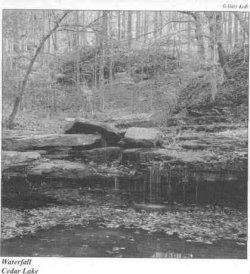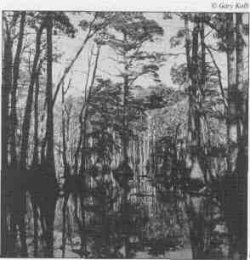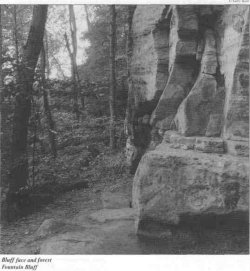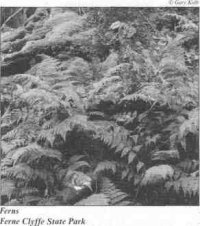The symbolic image of the landscape has been a part of our heritage since the Hudson River School painters first glorified the American wilderness. The sense of spiritual renewal, new opportunity and endless bounty to be found in nature informed and motivated the call to manifest destiny that spurred Americans' migration across the continent. This tradition has been paid homage by photographers ranging


Cypress trees
Horseshoe Lake
from Timothy O'Sullivan and Carlton Watkins to Ansel Adams and Meridel Rubenstein. Their photographs have vastly enriched our cultural and aesthetic heritage through recording and interpreting a major, defining feature of American experience: the landscape.
As controversy surrounding the uses, economic and recreational, of the Shawnee National Forest intensifies, it is important to reflect upon the nature of this place, to bring a visual record of

